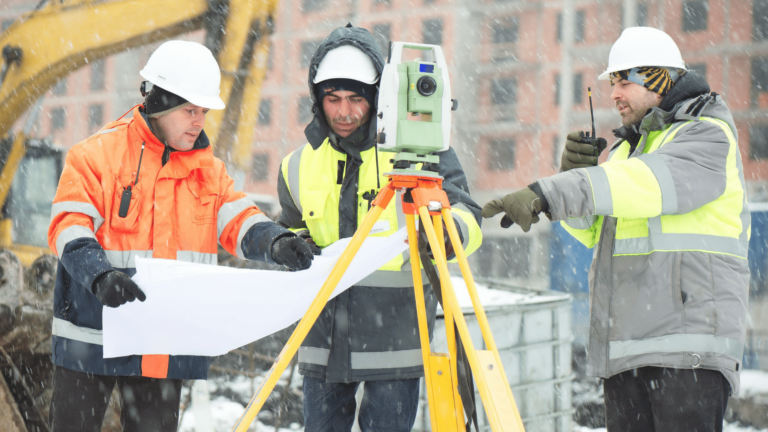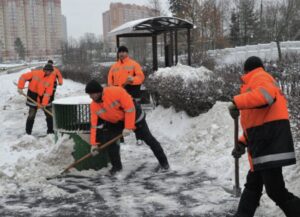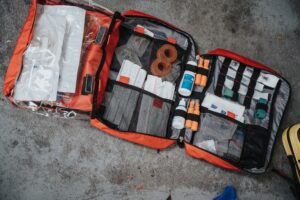BIG Special Discounts Available NOW! Check out our Products
Leader in Waste Management Solutions | PROUDLY MADE IN THE USA ![]()
Leader in Waste Management Solutions | PROUDLY MADE IN THE USA ![]()

As the winter months approach, ensuring the safety and well-being of workers exposed to cold temperatures becomes a top priority for employers. Cold weather can pose significant risks to employees, ranging from frostbite and hypothermia to slips and falls on icy surfaces. Properly educating employees about the potential hazards and necessary precautions is crucial for preventing cold-related illnesses and injuries. In this blog post, we’ll explore essential tips for employers on how to keep their workers safe during cold weather.

Education is a foundational step that must be considered when keeping workers safe in cold temperatures. Properly educating employees about the potential hazards and necessary precautions is crucial for preventing cold-related illnesses and injuries. Here’s a closer look at how to effectively educate your workforce:

Stay informed about weather forecasts in your region. Thankfully, modern technology — such as satellite data — can predict extreme weather patterns (such as snowstorms) days, if not weeks, in advance. You can receive this information by tuning into your local news broadcasts and receiving up-to-date and accurate weather predictions for your geographic area.
The safety of your employees comes first. When icy conditions are predicted, consider delaying work or implementing shorter shifts. The risk of cold-related injuries increases in severe cold weather. Prioritize safety over productivity, you’ll abide by OSHA guidelines, and boost employee morale.
In addition to monitoring weather conditions, you can also develop a weather policy. Create a clear and well-defined cold-weather policy that outlines how the company will respond to various weather conditions. This policy should include criteria for determining when it’s safe to work in cold temperatures and when adjustments must be made.

When working in cold temperatures, providing employees with adequate breaks isn’t just about comfort — it’s a crucial safety measure that can help prevent cold-related illnesses and injuries. Adequate breaks allow workers to warm up, maintain their core body temperature, and recharge their energy.
Frequent and more prolonged breaks are better than shorter ones in cold weather conditions. Also, encourage warm-up periods for employees to engage in physical exercises (e.g., jumping jacks). Not only is this good for their physical fitness, it increases blood circulation and raises body temperature.
Granting ample breaks also gives workers a mental breather, which helps reduce the stress and anxiety of working in harsh weather conditions.

Drinking fluids and consuming warm, nutritious meals can help the body generate heat and sustain energy levels. Ensure employees have access to hot beverages (such as hot cocoa, tea, and coffee) and warm, nutritious snacks and meals.
For example, you can set up a table area to place your hot beverages (in insulated canisters/beverage dispensers). Hot meals can be stored in insulated packages. You can even place snacks that are dense in nutrition, such as protein bars and Clif bars.

Image source:https://stratus.hr/resources/winter-work-safety
Due to icy and snowy surfaces, the risk of slips and falls escalates dramatically and makes a big safety issue. These incidents result in injuries and can disrupt operations and decrease worker morale. Employers must prioritize strategies that effectively address slip and fall hazards to ensure a safe and productive workplace.
Maintain clear pathways by promptly removing accumulated snow and ice. Use snow shovels or snow plows to make walkways, entryways, and parking lots accessible in hazardous conditions. You can also encourage your employees to wear footwear with slip-resistant soles to ensure a safe workplace. Remember, proper footwear can make all the difference in icy conditions by enhancing grip and traction on slippery surfaces. Appropriate footwear provides stability, reduces the risk of falls, and contributes to worker safety.

An emergency kit empowers workers and supervisors to respond effectively in urgent situations, potentially minimizing the impact of injuries or health issues. Here’s what you can include in your emergency kit:
By equipping employees with knowledge, proper gear, and effective emergency measures, employers can shield them from harm and empower them to face cold-weather challenges confidently, all the while prioritizing worker safety. Your commitment to their well-being lays the foundation for a resilient and productive workforce, fostering a workplace where safety is paramount. If you want to equip your employees with the essential gear necessary for working safely in cold temperatures, browse our portable restroom solutions here.